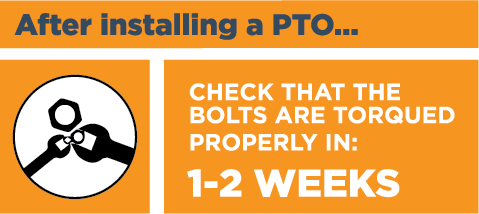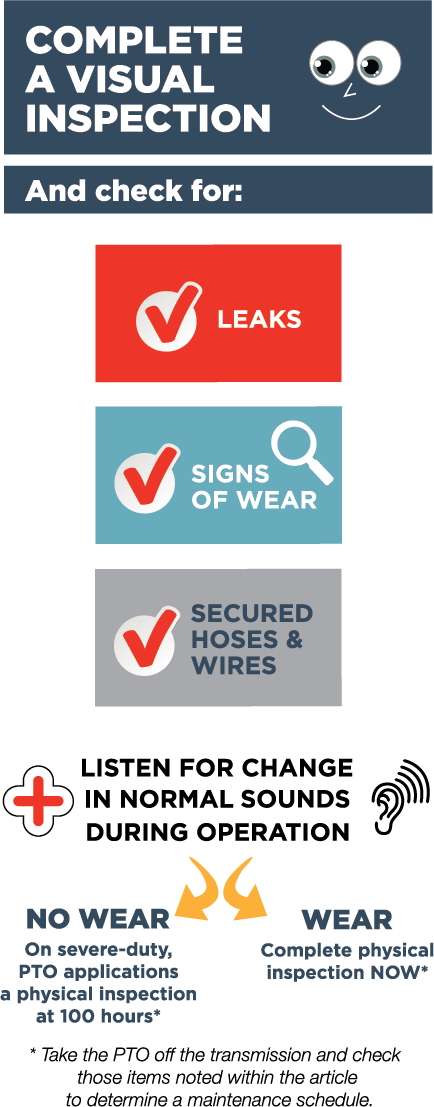The Life of a Power Take-off Depends on You
Featured Cover Story in Muncie Power Quarterly, Issue 4, 2017
The power take-off (PTO) is a critical component of a work truck’s hydraulic system as it transfers the power of the vehicle’s engine to auxiliary components executing a given application. As the PTO is mounted to the transmission, PTO failure due to neglected maintenance can cause downtime resulting in loss of revenue.
Considering the consequences, it begs the question: Why is PTO maintenance often neglected?
As Product Application Specialist Chuck Cole explained, part of the challenge of PTO maintenance is the lack of guidelines for creating a maintenance schedule as there is no set standard due to varying factors that impact the PTO such as load, application type, and more. Thus, creating a maintenance schedule must be determined on a case-by-case basis by the fleet’s maintenance manager.
“It becomes tribal knowledge,” said Chuck. “The life of a PTO can vary greatly based on the amount of horsepower required by the application.”
Initial Check
Due to this lack of standardized, guiding principles, Chuck shares some guidelines he has learned through his personal experiences and tribal knowledge to help others increase the life of the PTO. According to Chuck, some PTOs may only be used 10 to 15 minutes a week while others may be used 10 to 12 hours a day. Regardless, all PTOs should be checked within a week or two following installation to ensure that mounting bolts have been torqued properly.

Visual Inspection
“A visual inspection of the PTO needs to be done weekly,” he said. “Many issues with PTOs could be prevented if these guidelines were followed.”
These visual inspections should include looking for leaks, checking for signs of wear, and ensuring that the hose and wires are secured to the PTO and not rubbing against the transmission or other components—which can lead to fraying and leaks. Beyond visual cues, make sure to listen for any changes in normal sounds during operation as well.
"A good practice to follow is to perform the PTO maintenance along with regularly scheduled oil changes and checks because both the PTO and transmission use the same oil for lubrication and operation," said Chuck. "Because all of the maintenance is being completed simultaneously, downtime is minimized.”
Physical Inspection
Assuming there are no red flags during a visual or aural inspection, Chuck recommends performing the first physical inspection for severe-duty applications after 100 hours of use. If after 100 hours of use extensive wear is noted, physical maintenance should be scheduled more frequently.
Physical inspections can be performed on some PTOs by removing an inspection cover while others require removing the PTO from the transmission in order to complete the inspection. If the PTO has been removed for inspection, check the gears for unusual wear patterns and the bearings for smoothness or pitting. Presuming the gears and bearings have no issues, replace the gaskets and shaft seal. If the pump is remote mounted, check the drive shaft; otherwise, with a direct-mount pump, periodically clean and grease the pump splines where it connects to the PTO.
As Chuck noted, in the end prevention will be the key to reducing the amount of downtime and the expenses associated with a lack of regularly scheduled PTO maintenance.
“Typically, it’s just like everything else,” he said. “If you maintain it, it’s worthwhile.”


